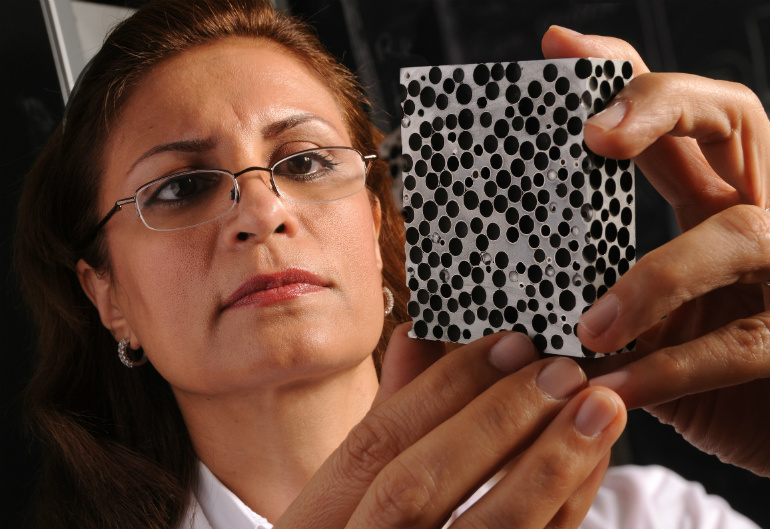A new study finds that novel lightweight composite metal foams (CMFs) are significantly more effective at insulating against high heat than the conventional base metals and alloys.
The finding means the CMF is especially promising for use in insulating, storing and transporting nuclear material, hazardous materials, explosives and other heat-sensitive materials, as well as for space exploration.
“The presence of air pockets inside CMF make it so effective at blocking heat, mainly because heat travels more slowly through air than through metal,” said Afsaneh Rabiei, professor of mechanical and aerospace engineering at North Carolina State University.
The composite metal foam consists of metallic hollow spheres – made of materials such as carbon steel, stainless steel or titanium – embedded in a metallic matrix made of steel, aluminium or metallic alloys.
“We have developed two technologies for manufacturing CMFs,” she said.
“One is based on casting a low melting point matrix material, such as aluminium, around hollow spheres made of a material with a higher melting point, such as steel. This creates aluminium-steel CMFs, for example. The other technique is based on sintering, or baking, the matrix powder around prefabricated hollow spheres. This creates CMFs such as steel-steel, which consist of steel hollow spheres in a steel matrix.”
Rabiei said they already knew the impact and radiation properties of CMFs, but now they know they can withstand high heat.
“This difference in thermal conductivity means that the use of composite metal foams could help avoid circumstances where accidents can lead to explosions,” she said.
The CMF made entirely of stainless steel expands 80% less than bulk stainless steel at 200°C, the differential increases at higher temperatures, and it expands at a fairly constant rate when exposed to high heat – whereas conventional bulk metals and alloys expand more rapidly as temperature increases.



